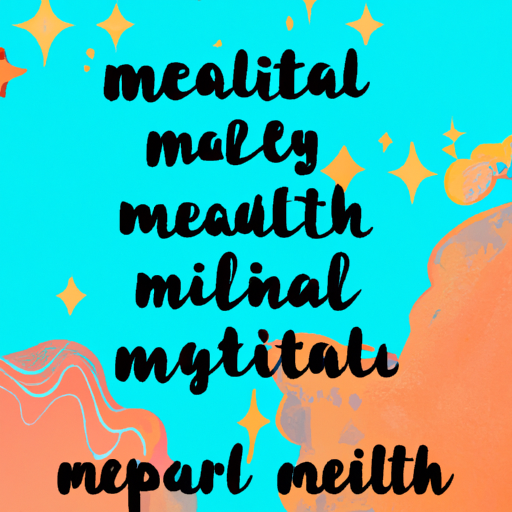Huge Mistakes That Can Ruin Your Mental Health
Introduction
When it comes to maintaining a healthy state of mind, we often overlook crucial factors that can severely impact our mental health. Making huge mistakes associated with our mental health can lead to long-term consequences. In this article, we will highlight and discuss these significant errors.
Compromising on Sleep: A Huge Mental Health Mistake
If you’ve ever had a restless night or missed a night’s sleep, you’ll be familiar with the crankiness and heightened emotions the next day. While this might be tolerable for a day or two, constant sleep deprivation can take a serious toll on your mental health. This is why it’s essential to prioritize good sleep hygiene, such as going to bed at a reasonable hour and avoiding habits detrimental to restful sleep. This includes cutting down on screen time and regulating caffeine intake, which can significantly interfere with your sleep cycle.
Skipping Physical Exercise: An Overlooked Mental Health Error
We all know the physical benefits of regular exercise, but did you know it’s equally beneficial for your mental health? Regular physical activity releases stress-fighting chemicals that help maintain a balanced state of mind. Thus, ditching your workout routine can be considered a huge mistake in regard to mental health. So, find an exercise routine you enjoy and make sure to squeeze in some time for it in your daily schedule.
Self-Medication: A Dangerous Mistake for Mental Health
Self-medication, particularly with drugs or alcohol, is a perilous path when it comes to mental health. Far from being a solution, it often exacerbates the problem, leading to a downward spiral of addiction and worsening mental health conditions. For instance, if you’re suffering from bipolar disorder, self-medication could land you in a bipolar treatment center that also deals with substance abuse issues. Therefore, it’s best to steer clear of any substances not prescribed by a medical professional.
Ignoring Domestic Issues: Mental Health Nightmare
Ignoring problems at home is another massive mistake that can severely impact mental health. Stress is a part of life, but when left unaddressed, it can lead to severe mental health complications. If you’re dealing with relationship issues, it’s essential to communicate with your partner and seek solutions, even if it means involving a professional, such as a marriage counselor.
Maintaining a Cluttered Environment: A Subtle Mental Health Mistake
Keeping a messy house might seem insignificant, but it can add to your stress levels, affecting your mental health. The clutter can weigh you down, making you feel overwhelmed and stressed. Therefore, it is crucial to declutter your home regularly. A clean, organized environment can significantly contribute to a calm and peaceful state of mind.
Conclusion
Being aware of these huge mistakes can help you take proactive steps towards maintaining good mental health. Remember, it’s equally important to seek professional help when necessary. Your mental health is as important as your physical health. So, prioritize it, care for it, and most importantly, respect it.
| Habit | Description | Alternatives/Solutions |
|---|---|---|
| Not getting enough sleep | Staying up late and not getting enough rest makes you feel cranky and emotional. | Go to bed at a reasonable hour and avoid habits that can harm your sleep, such as screen time and caffeine intake. |
| Ditching workout routine | Physical fitness is not only important for your physical health but also for mental health as it releases stress-fighting chemicals. | Choose an exercise you enjoy and incorporate it into your daily routine. |
| Self-medicating | Using drugs or alcohol to cope with mental health problems can lead to more issues, including addiction. | Seek professional help for mental health issues and avoid substances not prescribed to you. |
| Ignoring problems at home | Ignoring stressors, especially those within your home environment, can lead to further problems. | Address stressors head-on, communicate with your partner if you’re having relationship problems, and consider professional help like a marriage counselor if necessary. |
| Keeping a messy house | A cluttered environment can cause stress and make you feel weighed down. | Regularly clean and declutter your home. Getting rid of items you don’t need can make your home feel calmer. |

Underestimating the Impact of Diet on Mental Health
Another often overlooked mistake is not considering how our diet can affect our mental health. A diet lacking in essential nutrients can have a detrimental impact on our mood, energy levels, and overall mental health. Consuming junk food, processed meals, and sugary drinks may lead to fluctuations in blood sugar, which can trigger mood swings and anxiety. Therefore, maintaining a balanced and nutrient-rich diet is a crucial step towards maintaining good mental health.
Ignoring the Importance of Social Connections
Humans are social creatures, and ignoring the value of social connections can be a massive mistake when it comes to mental health. Isolation and loneliness can lead to feelings of sadness, anxiety, and depression. Establishing and maintaining healthy relationships with friends, family, and colleagues can provide emotional support, reduce stress, and improve your overall mental well-being.
Avoiding Professional Help: A Critical Mental Health Mistake
One of the most dangerous mistakes is avoiding professional help when dealing with mental health issues. The stigma associated with seeking mental health treatment often prevents individuals from getting the help they need. It’s crucial to remember that mental health professionals are trained to help you navigate your feelings, provide strategies for coping, and, if necessary, prescribe medication. Don’t let fear or shame prevent you from seeking the help you need.
Overcommitting and Overworking
Living in a fast-paced world, we often fall into the trap of overcommitting and overworking ourselves. This constant state of ‘busyness’ can lead to burnout, a state of emotional, physical, and mental exhaustion caused by excessive and prolonged stress. It’s important to understand that it’s okay to say ‘no’ sometimes and prioritize self-care. Taking breaks, setting realistic goals, and ensuring you have downtime can prevent burnout and protect your mental health.
Ignoring Mental Health Education
Many people make the mistake of not educating themselves about mental health. Understanding the basics about mental health and mental illness can help you recognize early warning signs in yourself or others and seek help early. Mental health education can also help reduce the stigma associated with mental illness, making it easier for people to seek help when they need it.
FAQs
Can diet really affect mental health?
Yes, diet can significantly impact mental health. Consuming a balanced diet rich in fruits, vegetables, lean proteins, and whole grains can help maintain stable blood sugar levels, leading to improved mood and energy levels.
How can I improve my mental health?
You can improve your mental health by maintaining a balanced diet, ensuring adequate sleep, engaging in regular physical activity, maintaining social connections, seeking professional help when needed, and educating yourself about mental health.
How can I recognize the signs of deteriorating mental health?
Changes in mood, energy levels, sleep patterns, appetite, and behavior can all be signs of deteriorating mental health. If you notice these changes in yourself or someone else, it’s important to seek professional help.
Conclusion
Recognizing and avoiding these mental health mistakes can significantly improve your mental well-being. It’s important to remember that mental health is not a destination but a journey, and it’s okay to ask for help along the way. Prioritize your mental health, and remember: it’s okay not to be okay sometimes.
Frequently Asked Questions
1. Why is sleep important for mental health?
Sleep is essential for the brain to rest and rejuvenate. Lack of sleep can lead to mood swings, anxiety, and even depression. It can also impair cognitive functions, including decision-making and memory.
2. How does physical exercise contribute to mental health?
Physical exercise releases endorphins – the body’s natural mood lifters. It also helps in reducing stress, improving memory, and enhancing overall cognitive function. Regular physical activity is often recommended as a part of treatment for various mental health conditions, including depression and anxiety.
3. Why is self-medication a risk to mental health?
Self-medication, particularly with substances like drugs or alcohol, can lead to addiction and worsen existing mental health conditions. It often masks the symptoms without addressing the root cause, leading to a vicious cycle of dependence and deteriorating mental health.
4. How do domestic issues impact mental health?
Unresolved domestic issues can lead to chronic stress, anxiety, and depression. It’s important to address these issues, communicate openly, and seek professional help if necessary.
5. Why is a clutter-free environment important for mental health?
A cluttered environment can cause stress, anxiety, and feelings of being overwhelmed. On the other hand, a clean and organized environment can promote feelings of calm and control, thereby contributing to better mental health.
6. When should I seek professional help for my mental health?
It’s important to seek professional help if you’re experiencing persistent feelings of sadness, anxiety, or stress that interfere with your daily life; if you’re having trouble coping with a traumatic event; if you’re using substances to cope with your feelings; or if you’re having thoughts of suicide. Remember, it’s okay to ask for help.

